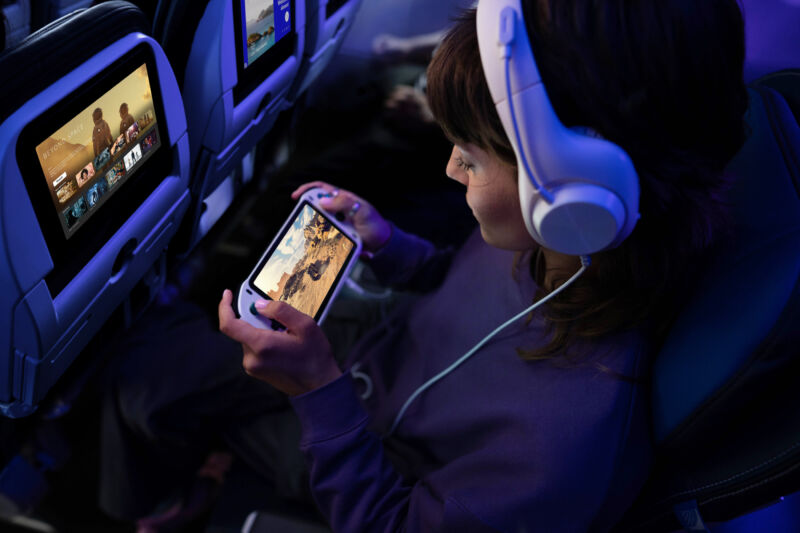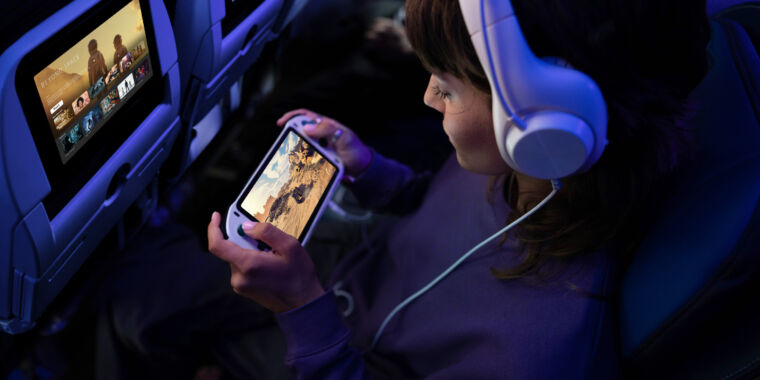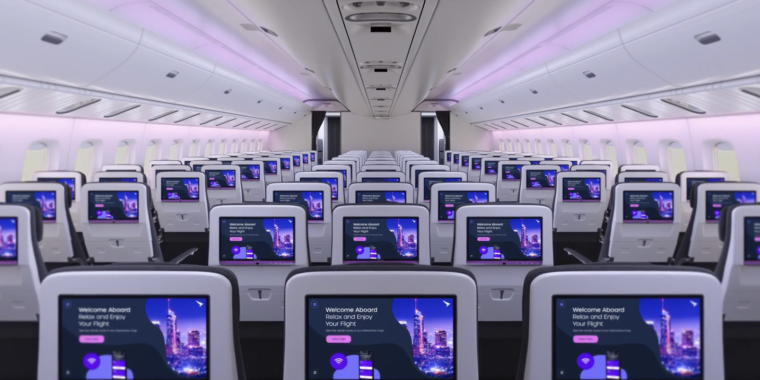Free Starlink Internet is coming to all of United’s airplanes
free as in beer —
The upgrade starts in 2025, but with more than 1,000 planes, will take several years.

Enlarge / Soon you’ll be able to stream games and video for free on United flights.
United
United Airlines announced this morning that it is giving its in-flight Internet access an upgrade. It has signed a deal with Starlink to deliver SpaceX’s satellite-based service to all its aircraft, a process that will start in 2025. And the good news for passengers is that the in-flight Wi-Fi will be free of charge.
The flying experience as it relates to consumer technology has come a very long way in the two-and-a-bit decades that Ars has been publishing. At the turn of the century, even having a power socket in your seat was a long shot. Laptop batteries didn’t last that long, either—usually less than the runtime of whatever DVD I hoped to distract myself with, if memory serves.
Bring a spare battery and that might double, but it helped to have a book or magazine to read.
By 2011, the picture had changed. Wi-Fi was no longer some esoteric thing known only to nerds who built their own computers, and smartphones and tablets were on their way to ubiquity. After an aborted attempt in 2004, 2008 made in-flight Internet access a reality in North America, although the air-to-ground cellular-based system was slow, unreliable, and expensive.
Air-to-ground Internet access was maybe slightly cheaper by 2018, but it was still frustrating and slow, particularly if you were, oh, I dunno, a journalist trying to upload images to a CMS on your way back from an event. But by then, there was a better alternative—satellites. Airliners started sporting new antenna-concealing blisters, and soon, we were all streaming and posting and working our way across the skies.
Enter SpaceX
That bandwidth was courtesy of Viasat, according to all the receipts in my expense reports, but in 2022, SpaceX announced that it was adding aviation to Starlink’s portfolio. Initially, Starlink only targeted smaller regional and private jet aircraft, but now its equipment is also certified for commercial passenger planes from Airbus and Boeing and is already in use with carriers including Qatar Airways and Air New Zealand.
United says it will start testing Starlink equipment early in 2025, with the first use on passenger flights later that year. The service will be available gate-to-gate (as opposed to only working above 10,000 feet, a restriction some other systems operate under), and it certainly sounds like a superior experience to current in-flight Internet, as it will explicitly allow streaming of both video and games, and multiple connected devices at once. Better yet, United says the service will be free for passengers.
Depending on the route you fly, you may need to have some patience, though. United says it will take several years to install Starlink systems on its more than 1,000 aircraft.
Free Starlink Internet is coming to all of United’s airplanes Read More »

